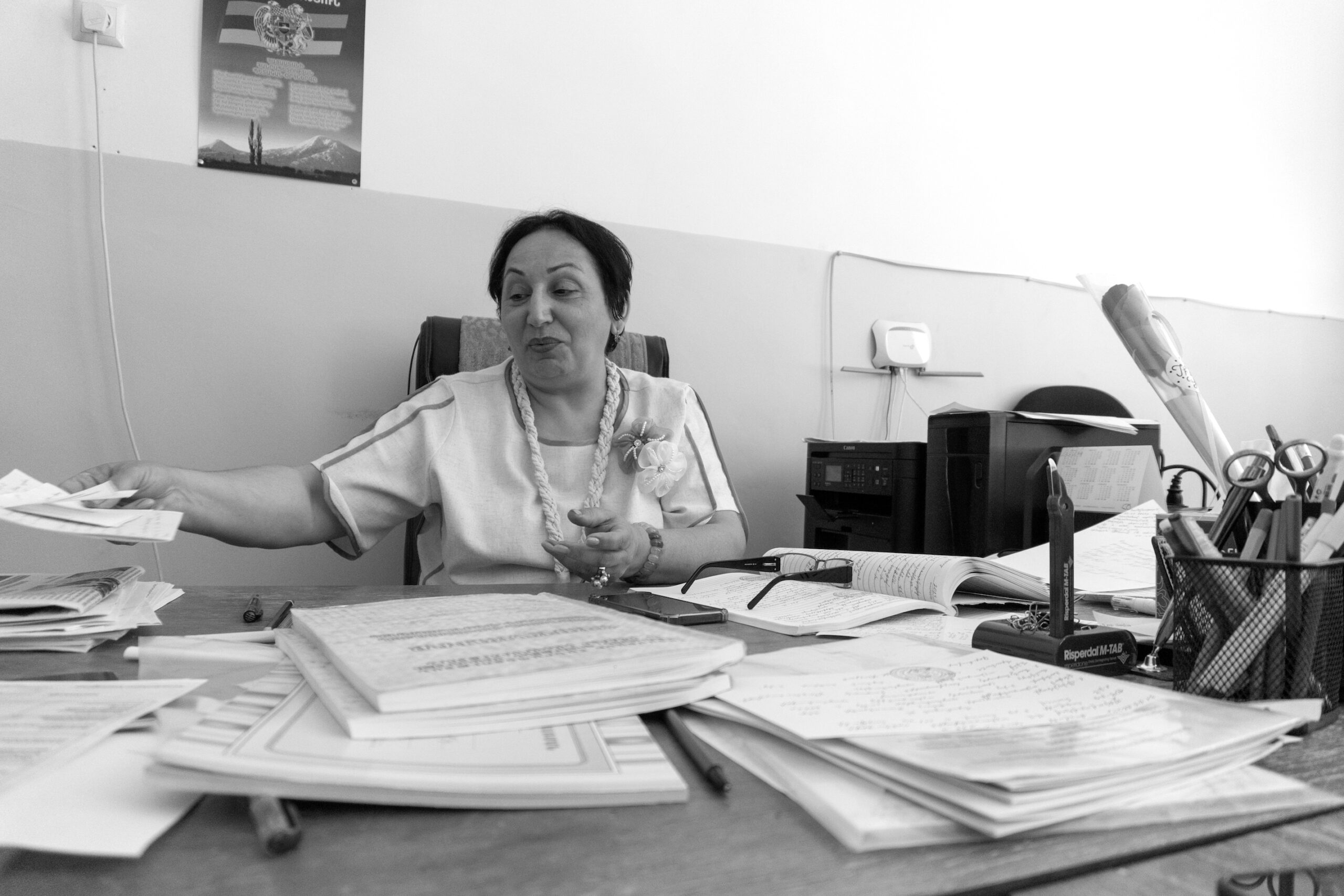
This spring in Armash was not like any other the residents had lived or even imagined. From March 5 to April 5, an international crew of six analog astronauts came to the village as part of a flagship research program (AMADEE-24). The goal was to develop workflows, and scientific research under specially created conditions on Earth, which will form the basis for future missions to the Red Planet. They lived in specifically designed habitats, walked around in space suit prototypes, and still managed to establish contact and make friends with the local community.
Many wondered, why Armash? It turns out that on satellite images one of the barren, rocky and dry peaks located in the village resembles the surface of Mars.

Photo from the Austrian Space Forum website
The astronauts came and went, but the talk about space travel stayed.
Karen Sanasaryan was a part of this “outer space” experiment from the very first days, since the construction of the research station begun and he continues to maintain the “space station” well past this spring’s cosmic turbulence.


“I wear my overalls with pride, it is a very important memento. I got to spend the most time with the astronauts, they loved and respected me, I especially remember Carmen. I don’t know English, but we understood each other well. Everyone knows that I am the one left in charge now. If something goes missing they have to answer to me.”



“It was not until the station was completed that people actually started to believe the mission would take place. Everyone was happy that something was being built, but they did not understand what it was. Some even believed the astronauts would fly to Mars from Armash; they were a little disappointed when they found out it was not the case. Eventually, the whole village was invited to the station and shown around, people even came from the neighbouring villages. Everyone was very happy that the world had now heard about Armash. Relatives living abroad have also heard about all this, and asked me if I can show them the station when they come in the summer.”

“I used to live in Moscow, I have land there, I farm it. I also used to have business there, I made cladding and iron decorations. At some point, I came back. Obviously, I did not have any connection with the universe, but now I see how everyone is connected to the universe. We have four children and I want them to become astronauts.”
Karen’s mother, Maritza says that although the astronauts had a special meal plan, which was part of the simulation, she couldn’t help herself and had be hospitable to the foreign guests.
“I liked them so much, I would send them my preserves; they saw me one day and said ‘thank you’. Can you believe it? They were doing hard work, it was important that they eat well. I took photos with everyone, it was pure joy. I was very sad when it all ended. They came to leave the keys with us and gave me a handbag as a gift, which I cherish. They said they were leaving but would return.”


Whether it is a cosmic intervention or coincidence, the headmaster of the Armash middle school, Nune Simonyan happens to be a physicist-astronomer. All of her students and the whole staff also got to visit the research station and meet with the “Martians”.
“I can see the small benefits already. The children were curious about what was happening, about when the flight to Mars was going to take place and ended up doing research about Mars. At the time, the ninth graders were learning about astronomy. The timing was great, a very beneficial coincidence; they all wrote papers about different planets.”
“I would very much like to see the space station become a sightseeing stop, for people to remember that a Mars mission simulation was conducted here. We benefit from meeting smart, intelligent people. The more they visit, the better. It is important for the children to understand that they can also acquire important knowledge in their very own village.”
Arame Zohrabyan is proud that he is from Armash. He says before Armash was known as the village on the banks of the River Yeraskh, now it is known as the village from where they fly to Mars.
“The universe started to interest me. I wonder what it is made of, what scientists are doing… I don’t know, but one day I would also like to see for myself what is up there.”
Hayk Aslanyan, the head of the Armenian Space Forum, one of the organises of the space mission, is convinced that all big dreams, even space travel, start small.
“Such events are comprehensive, they offer science, education and, why not, security. And most importantly, we [Armenians] have made contributions of global value in this sphere. There were a hundred reasons why this event could have been cancelled, but everything worked out. There will be another big event next year.”

“One must dream. Nothing happens without dreaming about if first. As Gernot Grömer, the Director of the Austrian Space Forum said, ‘in 15-20 years, when humanity lands on Mars for the first time, we can proudly tell our children that each one of us has been part of this historic journey.’”


